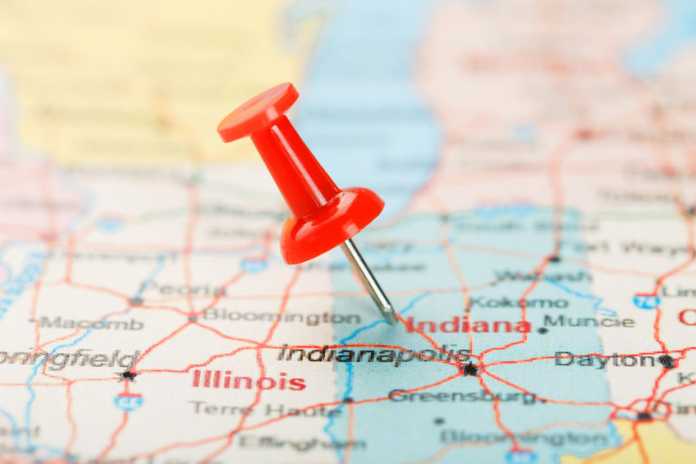
An article in the Indianapolis Star (Indy Star) titled, “’Will we have water when we need it?’: How Indiana utilities are preparing for climate change,” says utilities are concerned climate change will cause water shortages for Indiana’s growing urban populations and for agricultural use. However, data from the U.N.’s Intergovernmental Panel on Climate Change (IPCC), the U.S. government, and Indiana’s own Purdue University show Hoosiers have nothing to fear: As climate has changed, water has become more abundant not less.
“Utility planners are worried about finding enough water to supply a growing Indianapolis because of climate change,” writes the Indy Star. “Across Indiana, from Evansville and Bloomington to Indianapolis and Fort Wayne, city engineers are predicting a greater demand for water while grappling with widespread contamination in the state’s lakes and rivers.”
In addition, the Indy Star story goes on to claim summer drought risk and the threat of extreme heat is growing.
Water contamination is not caused by climate change. It is an engineering problem that improved and expanded water treatment facilities can address.
Concerning drought and extreme heat, while they are climate related issues, objective data show the number and severity of droughts have declined across the Midwest, including in Indiana, as the earth has modestly warmed. And, there is limited evidence extreme heat has or will cause an increase in heat related illnesses or deaths. By contrast, the reduced number of days in which people face extreme cold should result in fewer temperature related deaths in Indiana, and shorter winters should boost crop yields.
As reported in Climate at a Glance Drought, data from the National Oceanic and Atmospheric Administration (NOAA) shows droughts have become less frequent and severe in the United States over the past century. Indeed, in 2017 and then again in 2019, records were set for the smallest amount of the United States experiencing drought. Globally, the IPCC reports increasing precipitation in mid-latitude locations, and no detectable decrease regarding the rest of the globe.
Also confounding the Indy Star’s claims that drought, particularly summer drought, is increasing is a report from Purdue University which shows, average annual precipitation across Indiana has increased 5.6 inches since 1895, which includes a 0.19 inches per decade increase in summer rainfall.
Data from NOAA and the IPCC should lay to rest any fear that the increased rainfall will cause more flooding in Indiana. As Climate at a Glance Floods reports, NOAA’s records indicate a relatively flat trendline for flooding since 1895. And the IPCC says it has “low confidence” in any climate change impact regarding the frequency or severity of floods, going so far as to admit to having “low confidence” in even the “sign” of any changes. The latter point means it is just as likely climate change is making floods less frequent and less severe as that it is making them more frequent or severe.
Nor, contrary to the Indy Star’s expressed fears are the number of days with extreme heat growing in Indiana. Climate at a Glance: U.S. Heatwaves, cites data from NOAA showing heatwaves are far less severe in recent decades than was the case during the 1930s – nearly 100 years of global warming ago. Indeed, the majority of each state’s all-time high temperature records, including Indiana’s — 116℉ on July 14, 1936 —, were set during the first half of the 20th century. Also, the most accurate nationwide temperature station network, implemented in 2005, shows no sustained increase in daily high temperatures in the United States since at least 2005.
While droughts, extreme heat, and flooding are not increasing, contrary to the concerns raised in the Indy Star’s story, the number of extremely cold days have declined, as have the incidents of late frost. Indeed, Purdue reports extreme cold events are declining, projecting that by midcentury, the northern third of Indiana will experience on average only six days per year below 5°F, down from 13 days in the past. In addition, the growing season is expanding with the frost frost-free season having expanded by nine days per year statewide since 1895.
The latter two points are important because data consistently shows cold weather causes or is correlated with far more instances of illnesses and deaths than hot weather. For instance, an article published in the Southern Medical Journal in 2004, W. R. Keatinge and G. C. Donaldson noted, “Cold-related deaths are far more numerous than heat-related deaths in the United States, Europe, and almost all countries outside the tropics, and almost all of them are due to common illnesses that are increased by cold.”
More recently in a study published in the Lancet in 2015, researchers examined health data from 384 locations in 13 countries, accounting for more than 74 million deaths, and found cold weather, directly or indirectly, killed 1,700 percent more people than warm or hot weather.
And a shorter winter also means a longer growing season, an important fact to consider for Indiana, which ranks 10th in total agricultural output in the United States, contributing $31.2 billion directly to Indiana’s economy and directly providing jobs to more than 107,500 workers in the state.
In short, whatever water quality or shortage threats Indiana’s utilities are facing, contrary to the Indianapolis Star’s reporting, they have nothing to do with climate change. Concerning water availability and extreme weather, things are improving, not worsening, in Indiana.














